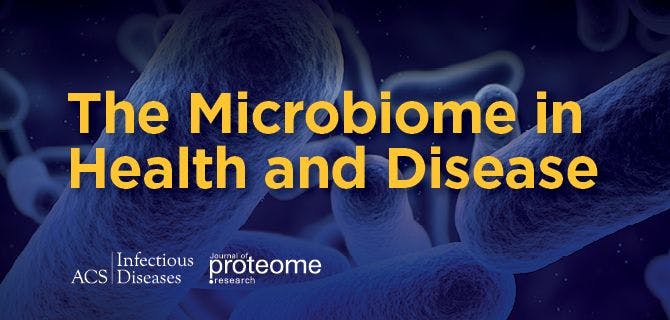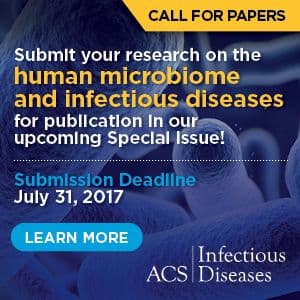Our bodies are filled with microorganisms, and scientists are just beginning to learn how they interact with each other and with our bodies. On August 16, 2016, ACS Infectious Diseases and Journal of Proteome Research presented The Microbiome in Health and Disease, final installment in the three-part #ACSmicrobiome Webinar Series, which examined what scientists are […]


On August 16, 2016, ACS Infectious Diseases and Journal of Proteome Research presented The Microbiome in Health and Disease, final installment in the three-part #ACSmicrobiome Webinar Series, which examined what scientists are doing to understand how the microbiome affects human health and disease. The webinar featured Dr. Emily Balskus, Morris Kahn Associate Professor of Chemistry and Chemical Biology at Harvard University, and Dr. Gary Siuzdak, Professor of Chemistry, Molecular and Computational Biology at The Scripps Research Institute and Senior Director of the Scripps Center for Metabolomics.
The Microbiome of the Human Gut
Microbial communities can be found everywhere on Earth, and the human body is no exception, Balskus says. There are microbes living on and inside of us. “If you count up the number of microbial cells associated with a person, you find we are just as much microbial as we are human.”
The colon is home to the most microbes found in the human body, and is one of the densest known microbial habitats on the planet, Balskus says. But while we all have microbiomes in our guts, the types of microbes inside us vary greatly. It is known that these organisms can influence energy balance and nutrition, help train the immune system, and provide protection from pathogens such as the bacteria Clostridium difficile (C. diff.). However, science has yet to determine exactly how they affect our bodies, and only 2% of the plasma metabolites influenced by gut microbes have been identified, Balskus says.
A great example of an identified compound and its effect on the body is trimethylamine (TMA), elevated levels of which are associated with trimethylaminuria, an inherited metabolic disorder known commonly as fish malodor syndrome. It is caused by a gene encoding mutation that causes enzymes to be unable to convert all of the TMA that the gut produces, Balskus says. Because there are no targeted treatments for the disease, patients will alter their own microbiomes with antibiotics or changes in their diets.
Balskus says work is being done to develop small molecules that can be manipulated, and targeted small molecule inhibitors could lead to more selective ways to study the microbiome. “We need better tools and approaches that will allow us to study chemistry directly in the microbial communities where it is taking place.”
Applying Technology to Link the Microbiome to Colon Cancer
One tool researchers are using to learn more about the human microbiome is XCMS, a metabolomic platform that allows for mass spectrometry and analysis. In his presentation, Siuzdak described how his team has used XCMS in examining colon cancer and how the microbiome can affect the disease’s progression.
Patients with tumors found on the cecum side, or right side, of the colon live about half as long as those with tumors on sigmoid side, or left side. Siuzdak and his team used mass spectrometry-based metabolomic analysis to examine tumor samples, working with Dr. David Elder at Karolinska Institutet, Dr. Cynthia Spears at Johns Hopkins University, and Dr. Laura Geotz at University of California, San Diego. Using XCMS, Siuzdak’s team was able to align the different liquid chromatology-mass spectrometry analyses of the metabolites in the different samples into a more coherent map. Being able to visualize and pull out the most interesting data was a huge help in the work, he explained.
They found that the cecum side tumors tend to have biofilm, or microorganisms that attach to each other, on them. Siuzdak said it is possible that the biofilms may be growing by feeding on polyamines, which are typically produced by tumors. The team also found that biofilms are penetrating the cells, which can stimulate cellular proliferation, which Siuzdak says indicates a “symbiotic relationship between the biofilm growth and the tumor growth.” While they still don’t know why the patients with cecum side tumors live for shorter amounts of time, they are a step closer to that discovery, and using XCMS to analyze the metabolomic data helped them get this far.